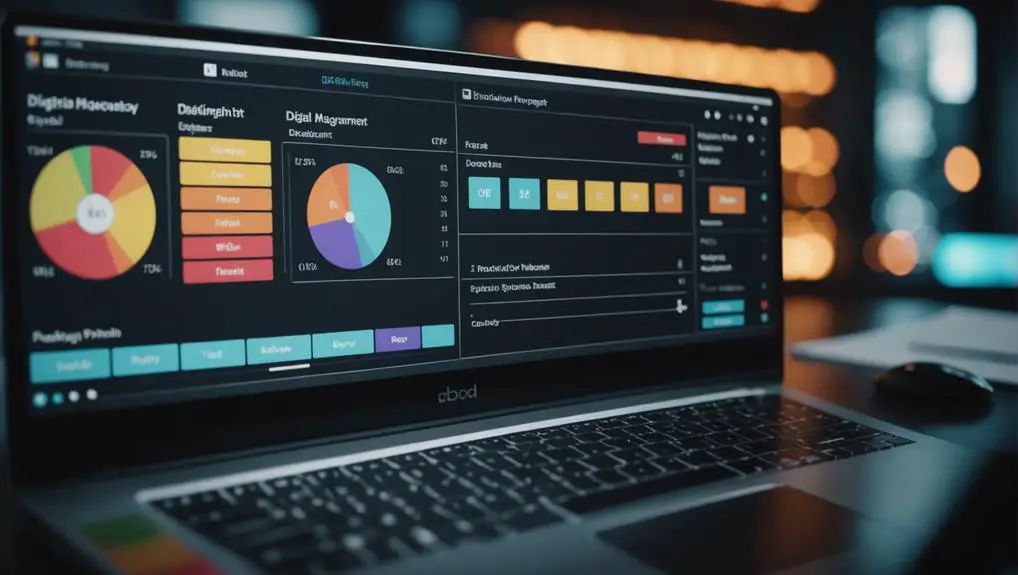When you want to figure out how fast your project is moving, all you have to do is count how many tasks got done in a specific time frame. Then, add up how long it took to finish them all. After that, just divide the number of tasks by the total time to get your throughput rate. This rate helps you see how efficient your project is and where you can make things better.
There are other factors like lead time, cycle time, and work in progress that also play a role in these calculations. By looking at all this data, you can spot trends, find bottlenecks, and see areas that need some polishing. Just keep in mind that being efficient is super important for the success of your project.
Key Takeaways
Let's see how many tasks you finished within a specific time. Then, we'll figure out how much time it took you in total. By dividing the completed units by the time taken, we can calculate the throughput rate. This rate will help us analyze how well the project is performing.
Importance of Project Throughput
Project throughput is really important because it affects how quickly a project gets done. Basically, it's all about how fast work gets completed in a project. When you work on improving throughput, you're making sure that things move smoothly, without any delays or hold-ups. This helps the team work more efficiently, saves money, and gets the project done faster.
When you manage project throughput well, you can figure out what's slowing things down and fix it. By looking at the data on throughput, you can see where things can be done better, use resources in a smarter way, and make sure work keeps moving along smoothly throughout the project. This proactive approach not only makes things more efficient but also improves the quality of the project's outcomes and lowers the chances of delays. So, understanding and optimizing project throughput is key to getting the most out of your project and making sure it's successful.
Definition of Throughput
Understanding throughput in project management is basically looking at how quickly work gets done within a certain timeframe. It's super important for making sure your project runs smoothly and gets finished on time. Let's dive a bit deeper into what throughput really means:
So, throughput is basically a way to measure how efficiently tasks are getting done in a project. It helps you see how things are progressing and can point out any bottlenecks that might be slowing things down. This info is crucial for keeping your project on track.
By keeping an eye on throughput, you can analyze how efficient your project is running. This lets you figure out what's working well and where improvements can be made to boost overall performance. It's like a performance check-up for your project.
Having a high throughput is a good sign for a project's success. Projects with high throughput are more likely to meet their deadlines and achieve successful outcomes. So, keeping track of throughput can really make a difference in how your project turns out.
Monitoring throughput directly affects your project timeline. It helps you keep tabs on progress and make sure tasks are getting done on time. This is key for ensuring your project stays on course and reaches its goals as planned.
Key Metrics for Throughput Calculation
When you're figuring out how fast a project is moving, it's important to look at the right numbers. Choosing the right metrics is key to getting an accurate picture of what's going on.
And once you have those metrics, analyzing the data is crucial for finding ways to make the project run even better.
Metric Selection
Choosing the right key metrics is crucial for accurately figuring out how well a project is moving along. When you're thinking about which metrics to use for evaluating performance, here are a few things to keep in mind:
- Lead Time: This is simply the amount of time it takes to go from starting a task to finishing it.
- Cycle Time: This metric looks at how long it takes to complete a full cycle of a task.
- Work in Progress (WIP): Keep an eye on how many tasks are currently in progress.
- Throughput Rate: This is all about calculating how many tasks are getting done in a specific timeframe.
Data Analysis
Want to figure out how to analyze data effectively to calculate project throughput? Well, data analysis is super important for understanding how your project is doing.
Using data visualization tools like Gantt charts can help you keep track of when tasks are getting done and spot any issues slowing things down. Plus, using statistical methods like working out the average cycle time or lead time can give you a better idea of how efficient your project is.
Formula for Project Throughput
Calculating project throughput is simply figuring out how many tasks or units you've finished compared to how long it took to finish them. This helps you see how well your project is moving along in terms of meeting deadlines. Here are some things to keep in mind when using this formula:
First, count all the tasks or deliverables that are done within a specific time frame. This gives you the total number of units completed.
Next, figure out how long it took to finish those tasks. This is the total time taken to complete the units.
Now, divide the total number of units completed by the total time taken. This gives you the throughput rate, which shows how quickly you're getting things done.
Factors Affecting Throughput
When you think about what affects how fast work gets done, just think about how quickly things are finished and what resources are on hand.
The faster tasks are completed, the quicker the whole project moves along.
And having enough manpower, materials, and technology can either help things go smoothly or slow them down.
Speed of Completion
Understanding what influences how quickly a project gets done is crucial for analyzing and improving how fast work gets completed. When we think about how fast things get done, things like managing time well and keeping track of efficiency really matter.
To boost how quickly projects get finished, focus on these things:
- Prioritize Tasks Effectively: Make sure tasks are prioritized based on how much they impact project milestones.
- Keep Communication Clear and Simple: Being clear and to the point in communication helps prevent delays and misunderstandings.
- Get Rid of Bottlenecks: Spot and fix bottlenecks right away to keep the project moving smoothly.
- Monitor Progress Regularly: Keeping a close watch on progress lets you make timely tweaks to speed up completion.
Resource Availability
Making sure you have enough resources available is crucial for getting the most out of your project and keeping things running smoothly. Your team's capacity is a key factor in figuring out how much work can be handled at any given time.
By knowing what your team can and can't do, you can assign tasks more effectively. This involves putting the right people on the right jobs based on their skills and availability. It also means making sure tools and materials are easy to get when they're needed.
Keeping an eye on your team's capacity and adjusting resources as necessary can help prevent problems and keep your project moving along. By managing resource availability carefully, you can boost productivity and make your project run more efficiently.
Analyzing Throughput Data
To effectively analyze throughput data, you should start by collecting relevant metrics and spotting trends. It's crucial to understand these trends for evaluating performance and making smart decisions. Here are some simple steps to help you analyze throughput data effectively:
First, gather data on key metrics like cycle time, lead time, and throughput rate. These numbers will give you a clear picture of how your process is performing.
Next, visualize the data by creating charts or graphs. This will make it easier to see patterns and fluctuations in throughput over time.
Be on the lookout for bottlenecks or constraints in the process that might be slowing down throughput. Identifying these issues will help you address them and improve overall performance.
Compare the actual throughput data with expected values to see how well the project is performing. This comparison will give you insights into any discrepancies and areas for improvement.
Improving Project Throughput
Improving project throughput starts with finding and fixing bottlenecks in your process. Process optimization is key to boosting project throughput. To do this, look at each step of your workflow to find inefficiencies. Identify tasks that are taking too long or causing delays. Once you spot these areas, focus on making them more efficient to improve workflow.
One way to optimize processes is by using automation for repetitive tasks. Automation can help reduce errors and speed up task completion. Also, think about rearranging task sequences to minimize idle time between activities. By reorganizing the workflow to ensure a smooth transition between tasks, you can enhance project throughput.
Keep an eye on key performance indicators (KPIs) related to your project's throughput to pinpoint areas for improvement. Use data-driven insights to make informed decisions about making changes to your process and enhancing workflow. By continuously working to optimize processes and improve workflow efficiency, you can maximize project throughput and overall productivity.
Case Studies on Throughput Optimization
When you look at real-life examples of how projects have improved their efficiency to get more done, you can pick up some really useful tips. By checking out different case studies on throughput optimization, you can learn a few key things:
- Ways to Boost Efficiency: Seeing how other projects have boosted their efficiency can give you practical ideas for your own work.
- Comparing Case Studies: When you compare different case studies, you start to see common strategies that consistently help to increase throughput.
- Techniques for Streamlining Workflows: Understanding the specific techniques used in different situations can show you ways to customize them for your own project.
- Analyzing Productivity Metrics: Looking at how productivity metrics change before and after throughput optimization can show you the real impact of these strategies.
Conclusion
Now that you know how to calculate project throughput, the important thing is to use this knowledge effectively in your projects. Consider the factors that impact throughput, analyze the data, and always seek ways to improve.
By doing this, you can enhance your project performance. Keep moving forward, keep fine-tuning your processes, and see how your project throughput improves. The path to success is just starting.




